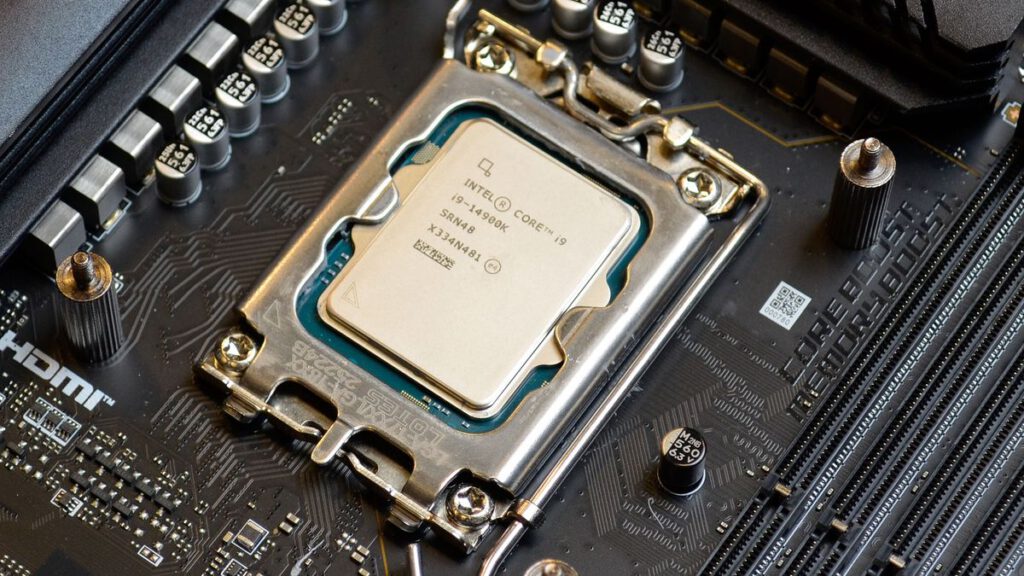Intel released a statement earlier this week about issues with instability in 14th and 13th Gen CPUs, but a few more details have emerged since then, including a clarification that any damage caused to high-end CPUs is permanent.
In case you missed it, Intel’s previous announcement identified “elevated operating voltage” as the primary (but not necessarily the only) cause of these Core i9 processors (and lower-tier chips as well) crashing or simply failing altogether.
Team Blue also assured that a fix in the form of a microcode update for these chips is on the way and is expected to arrive around mid-August.
However, what is now clear is that this is a preventative measure rather than a cure – meaning that while it will prevent instability issues for Raptor Lake and Raptor Lake Refresh processors, it will not repair the damage already done to CPUs that are already affected, nor will it stabilize the CPUs – meaning that misbehaving chips will continue to crash.
Alternatively, The Verge reports that it posed a series of questions to Intel and received a number of responses from Intel spokesman Thomas Hannaford, some of which may not be very reassuring to readers. First, the tech site points to Tom’s Hardware’s recent claims that the degradation on affected Intel CPUs is irreversible, and The Verge notes that Hannaford “did not deny that when we asked.”
One key question posed by The Verge was, “Does Intel expect the fix to work for chips that are already in production but aren’t yet showing symptoms (such as invisible degradation)? Are these CPUs simply reaching the end of their lifespan?”
Hannaford’s response: “Intel believes that the microcode patch will be an effective preventative measure for processors already in production, but continues to validate that it will address the instability scenarios reported to Intel for Core 13th/14th Gen desktop processors.”
“Intel is investigating options to make it easier for end users to identify affected or at-risk processors on their systems.
“This patch may provide some relief to instability for currently affected processors. However, customers experiencing instability on 13th or 14th generation desktop processor-based systems should contact Intel Customer Support for further assistance.”
(Image courtesy of Shutterstock)
Analysis: Even more worrying…
So what should we make of this statement? Intel may be “confident” that the patch will act as a preventative measure, but the issue with “invisible degradation” for us is whether latent damage (not yet detectable) is occurring that could become a problem in the future. In other words, the microcode update may prevent further damage to the chip, but our concern is that if some damage has already occurred (but without any real visible impact), in the long run the CPU may have a shorter lifespan than it should.
At this point, the whole incident is a bit unsettling, and what exacerbates those concerns is that Intel didn’t respond to questions from The Verge about whether it would extend warranties on its 13th or 14th generation processors. A spokesperson simply declined to comment.
It’s also worth noting that the final paragraph of the statement above doesn’t completely rule out the possibility that the microcode update could help Intel processors that are already affected by the instability issue, and that it’s “possible” that the patch could “improve some instability,” or at least that it could lead to some improvement.
But really, if you have a processor that’s already experiencing problems, your safest course of action is probably to return it for a replacement.
Other notable revelations from The Verge’s Q&A session with Intel include Team Blue admitting that any 13th or 14th Gen CPUs with a power draw (TDP) of 65W or higher could be affected by a potentially damaging high voltage issue.
This includes Core i9 and i7 chips, as well as Core i5 models such as the Intel Core i5-14600, and there have been reports of Core i5 CPUs being affected, although it seems that the higher the chips are and the higher the TDP, the greater the risk of suffering from stability issues.
Intel also said it would not issue any recalls over the issue, and has not halted shipments or sales of the chips until a microcode update is completed and verified.
The microcode patch is expected to be rolled out (via a BIOS update) via motherboard vendors next month, as mentioned above. Meanwhile, Hannaford confirmed to The Verge that Intel is continuing to investigate other possible causes of the issue alongside the “significant” problem uncovered by the voltage issue.
Intel’s problem here is that they can’t let this drag on for too long with the battle between Arrow Lake and Ryzen 9000 looming. This episode will be quite a turn-off for those considering buying next-gen chips, and may encourage them to prioritize Ryzen who might not have done so before this happened.

